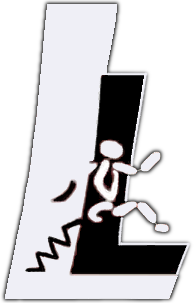Differences
This shows you the differences between two versions of the page.
| Both sides previous revision Previous revision Next revision | Previous revision Next revision Both sides next revision | ||
|
projects:projects [2019/12/17 10:59] Maziar Sharbafi [Hybrid Electric-Pneumatic Actuator (EPA) for legged locomotion (2017 - 2020)] |
projects:projects [2020/06/05 12:12] Guoping Zhao [Generating human walking gait with a neuromuscular model based on deep reinforcement learning (2018 - 2019)] |
||
|---|---|---|---|
| Line 32: | Line 32: | ||
| ===== Generating human walking gait with a neuromuscular model based on deep reinforcement learning (2018 - 2019) ===== | ===== Generating human walking gait with a neuromuscular model based on deep reinforcement learning (2018 - 2019) ===== | ||
| + | {{ youtube> | ||
| A gait model capable of generating human-like walking behavior at both the kinematic and the muscular level can be a very useful framework for developing control schemes for humanoids and wearable robots such as exoskeletons and prostheses. In this work we are aiming at demonstrating the feasibility of using deep reinforcement learning based approach for neuromuscular gait modelling. A lower limb gait model consists of seven segments, fourteen degrees of freedom, and twenty two Hill-type muscles was built to capture human leg dynamics and the characteristics of muscle properties. We implemented the proximal policy optimization algorithm to learn the sensory-motor mappings (control policy) and generate human-like walking behavior for the model. Human motion capture data, muscle activation patterns and metabolic cost estimation were included in the reward function for training. | A gait model capable of generating human-like walking behavior at both the kinematic and the muscular level can be a very useful framework for developing control schemes for humanoids and wearable robots such as exoskeletons and prostheses. In this work we are aiming at demonstrating the feasibility of using deep reinforcement learning based approach for neuromuscular gait modelling. A lower limb gait model consists of seven segments, fourteen degrees of freedom, and twenty two Hill-type muscles was built to capture human leg dynamics and the characteristics of muscle properties. We implemented the proximal policy optimization algorithm to learn the sensory-motor mappings (control policy) and generate human-like walking behavior for the model. Human motion capture data, muscle activation patterns and metabolic cost estimation were included in the reward function for training. | ||
| + | |||
| [[projects: | [[projects: | ||
| - | Contact: [[zhao@sport.tu-darmstadt.de|M.Sc. Guoping Zhao]] | + | Contact: [[zhao@sport.tu-darmstadt.de|Dr. Guoping Zhao]] |




